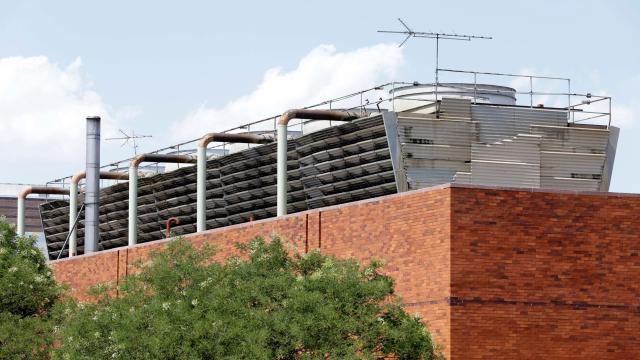The South Bronx is dealing with an outbreak of Legionnaire’s disease, with at least 86 known cases and seven deaths. It’s a medical emergency, but also an infrastructure crisis: The reason this outbreak occurred is a failure to care for the buildings we live and work in.
The good news is Legionnaire’s disease is relatively rare, and as awful as outbreaks like the Bronx case are, the disease can be contained. It doesn’t jump from person to person. We are not on the cusp of a pandemic; there is no need for panic. It’s treatable with antibiotics. But for people with pre-existing health issues, smokers, the very young, and the very old, it can be fatal.
Where Did Legionnaire’s Come From?
“Legionnaire’s disease” sounds like something an aristocratic French soldier in an 18th century romance would tragically succumb to, but its discovery was much more recent and not at all Gallic. Members of the American Legion fell sick en masse during a 1976 convention in Philadelphia. The outbreak was so fast that people were dying before officials knew there was an problem. Dying horrifically, as the Washington Post reports:
In the worst cases, victims’ lungs were flooded with a frothy, bloody fluid that filled the spaces between air sacs and prevented oxygen from getting into their bloodstream. The victims with this raging form of pneumonia almost always died.
During the initial burst of sickness, epidemiologists were stumped by what caused it. Conspiracy theories took hold; some people thought it was a left-wing chemical attack on veterans, while other rumours insisted that the Army had done the poisoning with its germ weapons.
But Legionnaire’s disease is not a partisan plot. It’s a more quotidian danger, one that stems from poorly maintained water cooling. You can get it from hot tubs, those misters that spray vegetables at the grocery store, decorative fountains — basically anyplace water is kept. The disease is a respiratory illness you get from exposure to water vapour contaminated with bacteria called Legionella pneumophila. You can’t get it from someone else, but if you stand in front of the wrong air conditioner, breathing in and out, that’s all it takes.
Where Cooling Towers Factor In
In the Bronx, the bacteria grew in water cooling towers in a cluster of buildings, and these water towers — which tend to be complicated mechanical service cores, indicative of modern HVAC engineering — are the key to this outbreak.
You probably don’t think about cooling towers often (if ever), and there are many different types — but most of them deal with a building’s air conditioning or water system. Often, this is where the warm water is cooled back down and re-circulated. The process of chilling that warm water often involves a fan, and plenty of vapour at warm temperatures that are perfect for bacteria, as the CDC explains.
Cooling towers are an urban invention, tied to the growth of the modern city. As buildings got larger, heating and cooling systems evolved to keep them comfortable — especially in the summer, when the heat island effect can make urban living unbearably hot. For hospitals, where temperature control is crucial, these systems are especially important. But despite the fact that most modern buildings have cooling towers, they’re mostly ignored when it comes to regulation.
A study published last year recommended that greater effort in maintaining and regulating cooling towers and water systems in areas known to have Legionnaire’s outbreaks could help prevent them, noting that the disease is tied to high-poverty areas. And while the water cooling towers linked to the outbreak have been disinfected in the short-term, a long-term plan to prevent this from happening again is necessary — and will necessarily involve an overhaul of how buildings are cared for.
Infrastructure Regulation As Preventative Healthcare
While the city has moved to regulate many other overlooked aspects of its infrastructure over the past few years, cooling towers are one of the final unregulated systems that have escaped attention. Now, that’s going to change — at least according to New York City mayor Bill de Blasio, who has promised to address how cooling towers are regulated, to stave off another outbreak like this.

At a meeting on Monday, city officials discussed how the situation got so bad in the first place, according to the New York Times:
The Bronx borough president, Ruben Diaz Jr., said that while the city responded swiftly and broadly once contamination was reported, he was shocked to discover a lack of measures in place for preventive monitoring of the towers. “Why, instead of doing a good job responding, don’t we do a good job proactively inspecting?” Mr. Diaz said.
It’s not like this is the first outbreak of the disease, or the first time institutions have grappled with how to respond to it. As another recent study on Legionnaire’s pointed out, plenty of organisations have regulations in place to prevent people from getting sick:
At least 4 federal agencies have been involved in guideline or policy development for the primary prevention of legionellosis, including CDC, Environmental Protection Agency (EPA), Veterans Health Administration (VHA), and OSHA. Numerous state and local governments have also been involved in the creation of guidelines for legionellosis prevention in their area of jurisdiction. In addition, several professional organisations have developed guidelines. These efforts have resulted in guidelines for preventing the transmission of Legionella in hospitals, hotels, cruise ships, and other settings.
Yet these policies didn’t help the people who died in the Bronx. These policies couldn’t offer a blanket regulation for taking care of buildings so that people don’t get sick. It’s time for stricter regulations and for governments to take enforcing these regulations seriously, even in low-income buildings — especially in low-income buildings. Regular water quality testing, proper maintenance of water storage units, and accurate record-keeping can prevent deaths here.
